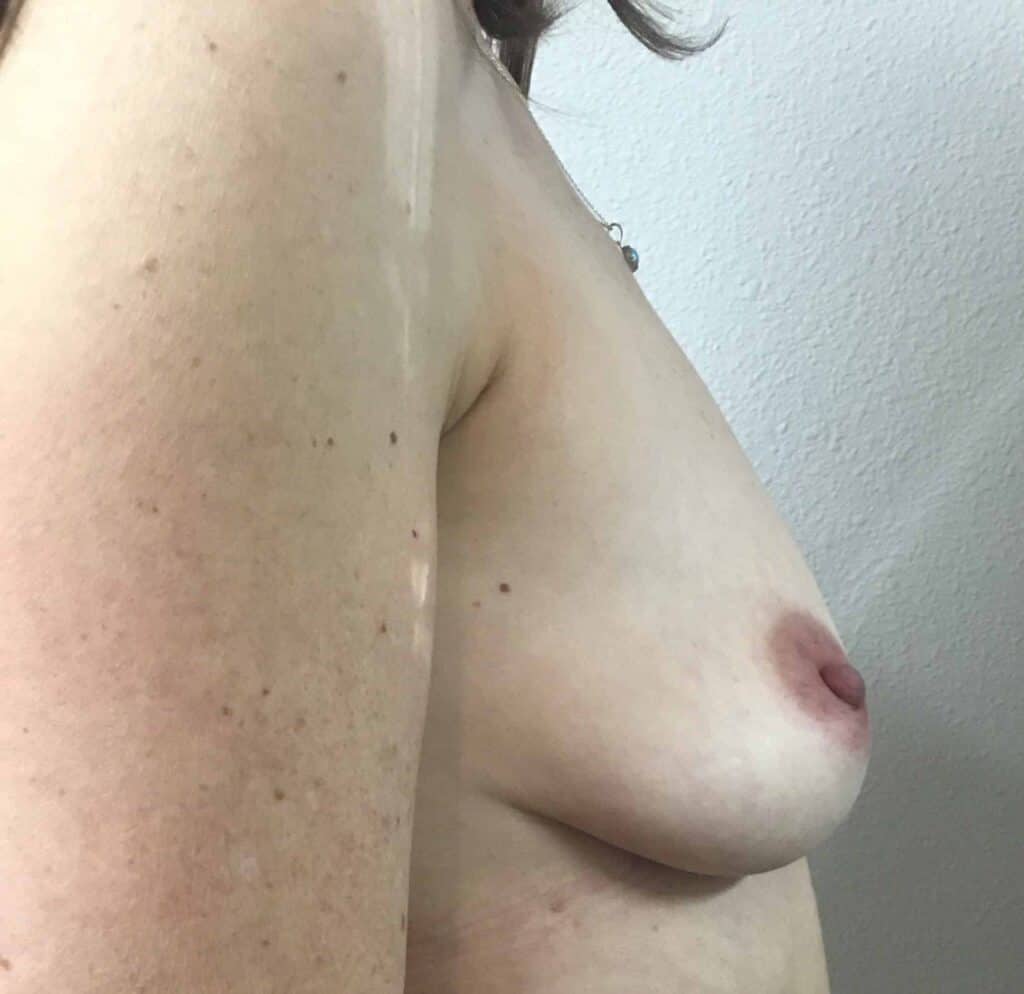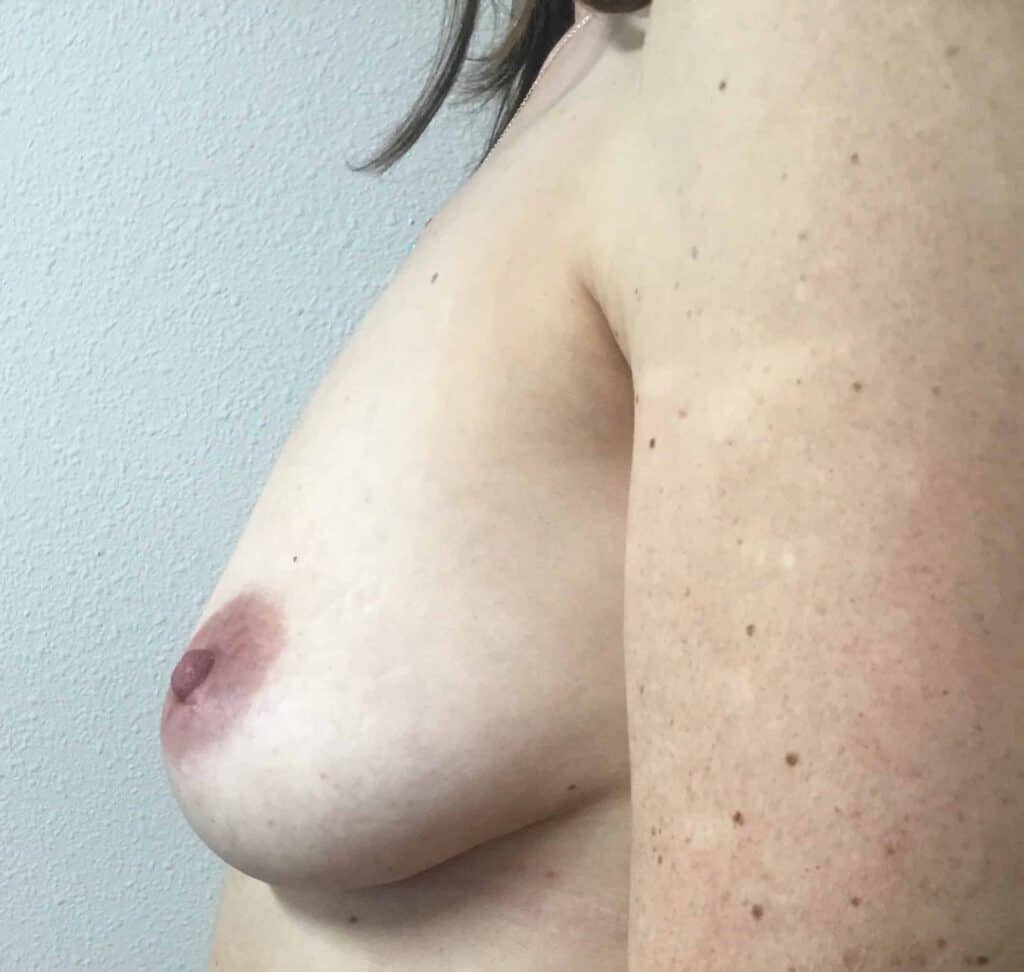While breast augmentation is a popular and successful procedure to enhance the size of your breasts, some women choose to have their implants removed at a later date. Breast implant removal surgery is performed to either remove old implants, or replace them with new ones.

Many women choose to have their breast implants removed for various reasons including complications like a rupture, or they simply decide they no longer want implants. Truth is, breast implants won’t last your entire life and the American Society of Plastic Surgeons recommends that implants be either removed or replaced every 10 to 15 years.
Regardless of your reason, Dr. Virden and our team will discuss your goals with you and work to achieve a safe and aesthetically pleasing outcome.






En bloc capsulectomy is a specific surgical technique involving the removal of your breast implant along with the entire scar tissue capsule that forms around the implant. You can learn more about our en bloc capsulectomy service here.
If you’re experiencing symptoms like pain, a noticeable change in your breast shape and size, nipple changes (like retraction or inversion), or an implant rupture, contact your doctor. These are just indications and don’t necessarily mean you need an en bloc capsulectomy, but Dr. Virden will decide the best course of treatment at an appointment.
If you’re experiencing these symptoms and want to consult Dr. Virden, schedule an appointment with our team today.

Ideal candidates for breast implant removal are in good health, maintain a stable weight, and have realistic expectations about this procedure (which we can discuss with you). You may be a good candidate for implant removal if you’ve had your implant for 10 to 15 years, are experiencing complications like capsular contracture, rupture, or discomfort, or if you simply don’t want your implants anymore and prefer a natural look and feel.
If you think you’re a good candidate for breast implant removal surgery, book a consultation with our team today.
You’ll be placed under general anesthesia throughout the procedure. Dr. Virden will make incisions around your existing implant scars or in a discreet location, like your armpit. The size and location of the incisions will depend on the type of implant (silicone or saline) and the presence of capsular contracture.
Dr. Virden will carefully dissect the capsule surrounding the implant and remove it. The capsule may be very thin and easily removed with the implant, but in some cases, it might require more careful dissection to avoid damaging surrounding tissues. Dr. Virden will then adjust your breast tissues to create your desired breast shape.
You can expect some pain, bruising, and swelling around your breasts, especially in the first few days. Dr. Virden will prescribe medication to manage discomfort and you’ll wear a surgical bra for support and drainage.
After a few weeks, you should experience a gradual decrease in pain and swelling as your body heals. With Dr. Virden’s approval, you can gradually resume most of your normal activities, like lifting and exercise.
Your breasts may take several weeks or even months to settle into their final shape, especially if additional procedures like a breast lift were performed, but expect a full recovery within six months.

En bloc capsulectomy is a specific surgical technique that involves the removal of your implant and the scar tissue capsule that has formed around it. The procedure removes both the implant and capsule in one piece. Click here for more information on En Bloc Capsulectomy.
Removing breast implants impacts your breasts shape and sensation. Your breasts may deflate and lose volume, potentially appearing smaller or more saggy, especially if your skin has stretched significantly to accommodate the implants. The majority of patients whose breast implants have been removed opt to have no additional surgery. The decision for breast lift should not be done immediately. Establishing new blood supply from the chest wall after several months makes a breast lift much safer. The skin’s ability to retract is directly proportional to age and amount of elasticity in one’s skin. Additionally, some temporary numbness around your nipples and breasts is common. Dr. Virden will reshape the area to help improve your overall look.
You’ll be placed under general anesthesia during the procedure. Pain and discomfort are common immediately following the procedure, but medication, rest, and a surgical bra can all minimize discomfort. The extent of the removal and your individual pain tolerance play an important factor in pain levels as well. Most patients resume normal daily activities after one to two weeks.
The procedure isn’t considered to be extremely complex but there are important factors to consider that affect the difficulty of this surgery. These factors include the implant type, and the presence and severity of a capsular contracture. Additionally, a ruptured implant where silicone has leaked out into the breast tissue will make the surgery more complex.
There is no benchmark age for breast implants to be removed. Implants have a lifespan of around 10 to 15 years, but some function for longer. If you experience complications or decide you no longer want your implants, those reasons can also cut the “age” of your implants short.
Leaving breast implants in for longer than 10 years doesn’t necessarily mean there will be problems, but the risk of complications does increase with time. As mentioned above, implants can last between 10 to 15 years, and sometimes longer. Consult your doctor if you have concerns about your implants.
Whether your breasts look good after implant removal depends on several factors, but achieving a positive outcome is of course possible. Factors that affect breast appearance post-removal include skin elasticity, and the size and placement of your implant. If a severe capsular contracture was present, that can distort your breast shape.
Positive outcomes after removal are that you may find a more natural and comfortable feel, and a reduced risk of complications.
Benefits of having breast implants removed include a reduced risk of future ruptures, scarring, and infections. More clear mammograms are also possible. If you’ve experienced pain from tightened scar tissue, removal can offer relief.
Beyond physical benefits, some women decide they enjoy a more natural look and feel, and peace of mind from not worrying about complications.
Our office does not bill insurance directly. Talk with your insurance provider to see what coverage you may have outside of our office.
En bloc is a French term that translates to “all together” or “as a whole.” An en bloc capsulectomy refers to a method of breast implant removal that removes the scar tissue capsule and the breast implant all at once, without opening the capsule. The goal is not to have any “spillage” of the implant or surrounding tissue into the breast pocket. This type of implant removal is performed for many reasons. Some include development of implant complications, aesthetics, and/or fear of the long-term safety of the implants.
©2024 Charles P. Virden, MD
Designed by M&P Creative Marketing Agency